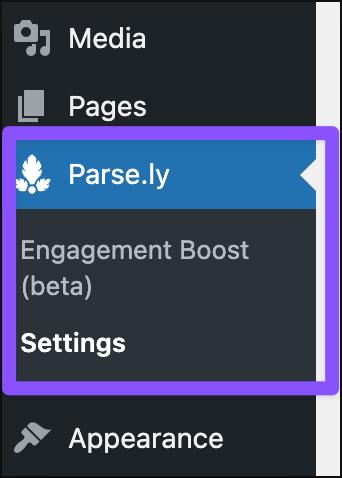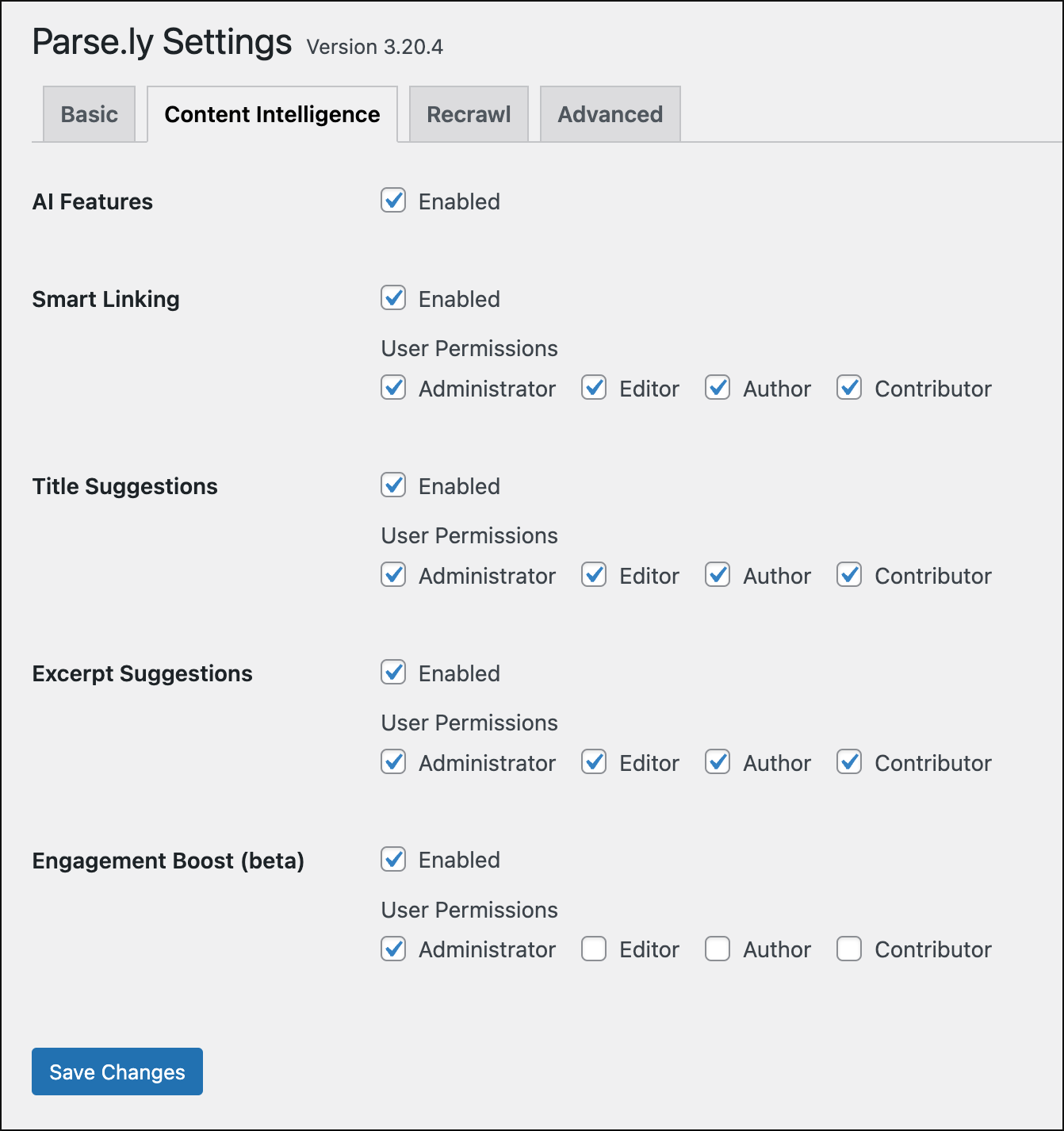Parse.ly Content Intelligence
Parse.ly Content Intelligence (PCI) is a set of content insights available to WordPress users of the Parse.ly plugin (wp-parsely). When viewing the WordPress Admin dashboard and editing or authoring a post in WordPress, users rely on PCI for curated analytics, content insights, and information otherwise only available within the Parse.ly Dashboard.
Note
The PCI experience lives within WordPress. It’s powered by Parse.ly but does not grant access to the complete Dashboard, API, or Data Pipeline.
Learn more about how to install the Parse.ly WordPress plugin and how to put PCI to work with WordPress.
Pro Tip
Wondering if PCI is right for your team? Contact your Relationship Manager for more information and to enable a PCI trial on your site.
Prerequisites
General requirements to use PCI include:
- Version 3.6 or greater of the wp-parsely WordPress plugin (see release notes for the latest version available).
- The WordPress block editor to edit and publish content.
PCI’s AI features are available only to WordPress VIP CMS customers or customers of both WordPress VIP CMS and Parse.ly.
- AI features require written consent to opt in — submit your request here.
WordPress VIP CMS customers must first activate Parse.ly as an integration to use PCI with production sites.
Parse.ly-only customers first need to purchase the Parse.ly API to enable PCI. Then, find the API secret under the API Settings page of the Parse.ly Dashboard’s account menu. Enter the API secret into the wp-parsely plugin’s settings in the WP Admin dashboard.
Note
Parse.ly-only customers who would like to purchase the API can contact their Relationship Manager for more details and assistance.
PCI settings
Customize PCI, including which user roles can access AI-powered features, from the Parse.ly Settings page in the WP Admin dashboard.

- Log into your site’s WP Admin dashboard.
- Click
Parse.lyin the left navigation menu, thenSettings.
Then, click the Content Intelligence tab to access all PCI-specific settings.

Note
Settings for PCI’s AI features require version 3.16.0 of the wp-parsely WordPress plugin or greater.
Disable PCI
By default, all available PCI features are enabled. Technical teams can disable PCI — either entirely or specific features — using the following filters:
// Disable PCI entirely.
add_filter( 'wp_parsely_enable_content_helper', '__return_false' );
// Disable the PCI WP Admin dashboard widget.
add_filter( 'wp_parsely_enable_content_helper_dashboard_widget', '__return_false' );
// Disable the PCI Parse.ly Stats column.
add_filter( 'wp_parsely_enable_content_helper_stats_column', '__return_false' );
// Disable the PCI block editor sidebar.
add_filter( 'wp_parsely_enable_content_helper_editor_sidebar', '__return_false' );
// The above filters can be used in conjunction. Here's an example of
// disabling all PCI features except for the WP Admin dashboard widget.
add_filter( 'wp_parsely_enable_content_helper', '__return_false' );
add_filter( 'wp_parsely_enable_content_helper_dashboard_widget', '__return_true' );Last updated: July 17, 2025